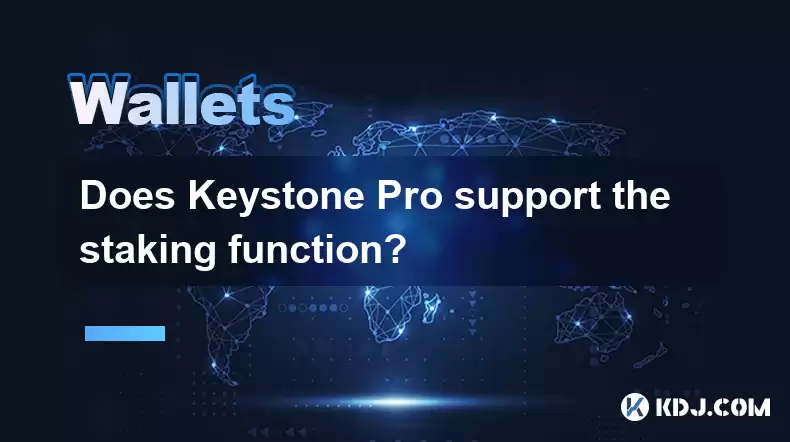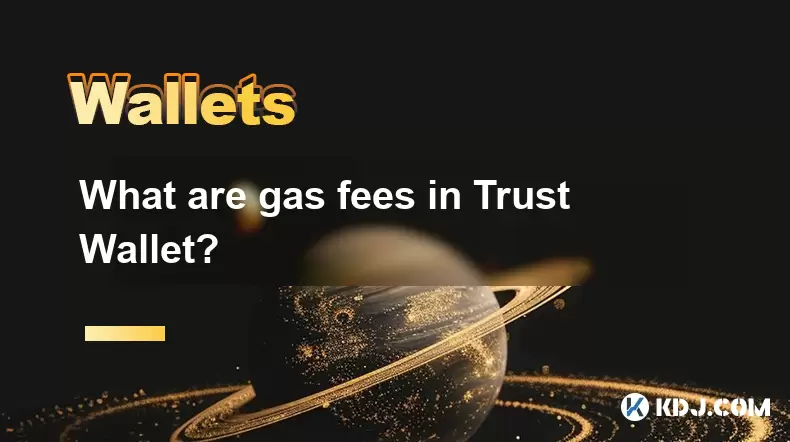-
 Bitcoin
Bitcoin $114400
1.32% -
 Ethereum
Ethereum $3499
2.20% -
 XRP
XRP $2.922
4.26% -
 Tether USDt
Tether USDt $0.0000
0.03% -
 BNB
BNB $752.6
1.53% -
 Solana
Solana $161.8
1.64% -
 USDC
USDC $0.9999
0.01% -
 TRON
TRON $0.3267
1.32% -
 Dogecoin
Dogecoin $0.1991
3.02% -
 Cardano
Cardano $0.7251
3.29% -
 Hyperliquid
Hyperliquid $38.32
3.36% -
 Stellar
Stellar $0.3972
7.58% -
 Sui
Sui $3.437
2.74% -
 Chainlink
Chainlink $16.29
3.65% -
 Bitcoin Cash
Bitcoin Cash $545.3
3.70% -
 Hedera
Hedera $0.2482
7.49% -
 Ethena USDe
Ethena USDe $1.001
0.03% -
 Avalanche
Avalanche $21.40
2.02% -
 Toncoin
Toncoin $3.579
1.56% -
 Litecoin
Litecoin $109.3
2.20% -
 UNUS SED LEO
UNUS SED LEO $8.951
-0.18% -
 Shiba Inu
Shiba Inu $0.00001220
2.75% -
 Polkadot
Polkadot $3.613
2.99% -
 Uniswap
Uniswap $9.173
3.78% -
 Monero
Monero $302.6
2.62% -
 Dai
Dai $0.0000
0.00% -
 Bitget Token
Bitget Token $4.320
1.52% -
 Pepe
Pepe $0.00001048
3.40% -
 Cronos
Cronos $0.1314
4.33% -
 Aave
Aave $259.4
3.54%
Does Keystone Pro support the staking function?
Keystone Pro doesn't support direct staking, but users can stake by transferring assets to platforms like Coinbase or using software wallets like Ledger Live.
Apr 24, 2025 at 11:22 pm

Introduction to Keystone Pro
Keystone Pro is a hardware wallet designed for the secure storage of cryptocurrencies. It supports a wide range of cryptocurrencies and offers robust security features to protect users' digital assets. One of the frequently asked questions about Keystone Pro is whether it supports the staking function. In this article, we will explore the staking capabilities of Keystone Pro and provide detailed information on how to use this feature if available.
Understanding Staking in Cryptocurrencies
Staking is a process in which users hold and "stake" their cryptocurrencies to support the operations of a blockchain network. In return, they receive rewards, often in the form of additional cryptocurrency. Staking is commonly used in proof-of-stake (PoS) and delegated proof-of-stake (DPoS) blockchain networks. It is an essential feature for users looking to earn passive income from their cryptocurrency holdings.
Does Keystone Pro Support Staking?
As of the latest updates, Keystone Pro does not directly support staking. This means that users cannot stake their cryptocurrencies directly from the Keystone Pro wallet. However, this does not mean that users cannot participate in staking at all. There are alternative methods to stake cryptocurrencies even if the hardware wallet itself does not offer this feature.
Alternative Methods for Staking with Keystone Pro
While Keystone Pro does not support staking directly, users can still participate in staking by using third-party platforms or software. Here's how you can do it:
Transfer Cryptocurrencies to a Staking Platform: Users can transfer their cryptocurrencies from Keystone Pro to a reputable staking platform. These platforms allow users to stake their assets and earn rewards. Examples of such platforms include Coinbase, Binance, and Kraken.
Use Software Wallets with Staking Support: Some software wallets support staking and can be used in conjunction with Keystone Pro. Users can transfer their cryptocurrencies from Keystone Pro to a software wallet like Ledger Live or Trust Wallet, which support staking for certain cryptocurrencies.
Delegating to Validators: In some PoS networks, users can delegate their staking rights to validators who manage the staking process on their behalf. Users can transfer their cryptocurrencies to a validator's address from Keystone Pro and participate in staking indirectly.
How to Stake Using a Third-Party Platform
If you decide to use a third-party platform to stake your cryptocurrencies from Keystone Pro, here are the steps you need to follow:
Choose a Staking Platform: Research and select a reputable staking platform that supports the cryptocurrency you want to stake. Ensure the platform has a good track record and offers competitive rewards.
Transfer Cryptocurrencies from Keystone Pro: Open your Keystone Pro wallet and navigate to the send or transfer section. Enter the staking platform's deposit address and the amount of cryptocurrency you want to stake. Confirm the transaction and wait for it to be processed.
Set Up Staking on the Platform: Once your cryptocurrencies are transferred to the staking platform, follow the platform's instructions to set up staking. This usually involves selecting the cryptocurrency and the amount you want to stake, then confirming your staking request.
Monitor Your Staking Rewards: Regularly check the staking platform to monitor your rewards and ensure everything is running smoothly. Some platforms allow you to reinvest your rewards automatically, while others require manual action.
Security Considerations When Staking with Keystone Pro
When using third-party platforms or software wallets to stake your cryptocurrencies, it's crucial to consider the security implications:
Verify Platform Security: Ensure the staking platform you choose has strong security measures in place, such as two-factor authentication (2FA) and cold storage for funds.
Use Secure Connections: Always use secure internet connections when transferring cryptocurrencies or accessing staking platforms. Avoid public Wi-Fi networks and use a VPN if necessary.
Keep Your Keystone Pro Secure: Even though you're using external platforms for staking, keep your Keystone Pro wallet secure. Never share your recovery phrase or private keys with anyone, and always update your device's firmware to the latest version.
Frequently Asked Questions
Q: Can I stake directly from Keystone Pro without using a third-party platform?
A: No, Keystone Pro does not support direct staking. Users must transfer their cryptocurrencies to a third-party platform or software wallet that supports staking.
Q: Are there any fees associated with staking using Keystone Pro and a third-party platform?
A: Yes, there may be fees associated with transferring cryptocurrencies from Keystone Pro to a staking platform, as well as fees charged by the staking platform itself. Always review the fee structure before proceeding.
Q: How can I ensure the safety of my staked assets when using a third-party platform with Keystone Pro?
A: To ensure the safety of your staked assets, choose a reputable staking platform with strong security measures, use secure internet connections, and keep your Keystone Pro wallet secure by protecting your recovery phrase and updating firmware regularly.
Q: Can I unstake my cryptocurrencies and transfer them back to Keystone Pro at any time?
A: The ability to unstake and transfer cryptocurrencies back to Keystone Pro depends on the specific staking platform and the cryptocurrency you are staking. Some platforms may have lock-up periods or require a certain amount of time before you can unstake your assets. Always check the platform's terms and conditions before staking.
Disclaimer:info@kdj.com
The information provided is not trading advice. kdj.com does not assume any responsibility for any investments made based on the information provided in this article. Cryptocurrencies are highly volatile and it is highly recommended that you invest with caution after thorough research!
If you believe that the content used on this website infringes your copyright, please contact us immediately (info@kdj.com) and we will delete it promptly.
- Kaspa, HBAR, and Cold Wallet: A New York Minute on Crypto's Latest Moves
- 2025-08-04 09:11:54
- Ethereum Whale Watch: Selling Pressure and Price Volatility
- 2025-08-04 09:11:54
- XRP ETF Mania: Teucrium's Crypto Triumph and the Altcoin Frenzy
- 2025-08-04 09:30:13
- Crypto Wallet Scam: A $900K Loss & What You Need to Know
- 2025-08-04 09:35:13
- Dogecoin's Wild Ride: Elliott Wave, Stochastic RSI, and What's Next, Ya Know?
- 2025-08-04 09:40:12
- Shiba Inu (SHIB), Crypto Investments, and the Meme Coin Evolution: What's the Deal?
- 2025-08-04 09:45:17
Related knowledge

What is a watch-only wallet in Trust Wallet?
Aug 02,2025 at 03:36am
Understanding the Concept of a Watch-Only WalletA watch-only wallet in Trust Wallet allows users to monitor a cryptocurrency address without having ac...

How to fix a stuck pending transaction in Trust Wallet?
Aug 03,2025 at 06:14am
Understanding Why Transactions Get Stuck in Trust WalletWhen using Trust Wallet, users may occasionally encounter a pending transaction that appears t...

What is a multi-coin wallet in Trust Wallet?
Aug 03,2025 at 04:43am
Understanding Multi-Coin Wallets in Trust WalletA multi-coin wallet in Trust Wallet refers to a digital wallet that supports multiple cryptocurrencies...

How to switch between networks in Trust Wallet?
Aug 02,2025 at 12:36pm
Understanding Network Switching in Trust WalletSwitching between networks in Trust Wallet allows users to manage assets across different blockchains s...

How to check my full transaction history on Trust Wallet?
Aug 02,2025 at 09:24am
Understanding Transaction History in Trust WalletTrust Wallet is a widely used non-custodial cryptocurrency wallet that supports a broad range of bloc...

What are gas fees in Trust Wallet?
Aug 04,2025 at 06:14am
Understanding Gas Fees in Trust WalletGas fees in Trust Wallet refer to the transaction costs required to execute operations on a blockchain network. ...

What is a watch-only wallet in Trust Wallet?
Aug 02,2025 at 03:36am
Understanding the Concept of a Watch-Only WalletA watch-only wallet in Trust Wallet allows users to monitor a cryptocurrency address without having ac...

How to fix a stuck pending transaction in Trust Wallet?
Aug 03,2025 at 06:14am
Understanding Why Transactions Get Stuck in Trust WalletWhen using Trust Wallet, users may occasionally encounter a pending transaction that appears t...

What is a multi-coin wallet in Trust Wallet?
Aug 03,2025 at 04:43am
Understanding Multi-Coin Wallets in Trust WalletA multi-coin wallet in Trust Wallet refers to a digital wallet that supports multiple cryptocurrencies...

How to switch between networks in Trust Wallet?
Aug 02,2025 at 12:36pm
Understanding Network Switching in Trust WalletSwitching between networks in Trust Wallet allows users to manage assets across different blockchains s...

How to check my full transaction history on Trust Wallet?
Aug 02,2025 at 09:24am
Understanding Transaction History in Trust WalletTrust Wallet is a widely used non-custodial cryptocurrency wallet that supports a broad range of bloc...

What are gas fees in Trust Wallet?
Aug 04,2025 at 06:14am
Understanding Gas Fees in Trust WalletGas fees in Trust Wallet refer to the transaction costs required to execute operations on a blockchain network. ...
See all articles

























































































